Another security checkpoint and we were in the Saqqara complex, it’s huge, I would say at least the same size or even bigger than the Giza plateau complex. The majority of the complex is out of bounds for tourists however there is still loads to look at and visit. As we entered the complex we passed by a man harvesting some dates; a rudimentary harness around his waist made of rope, at the one end the rope extends to wrap around the palm and attaches to the other side of the harness through a loop and extends down to the ground. Climbing up the palm with no shoes and cutting the dates from the palm with a small sickle.
As with Dahshur the Saqqara complex is less visited which I can’t fathom why, although busier than Dahshur there were only two dozen tourists at most. There are in fact 16 pyramids in Saqqara; some are barely distinguishable as they are in varying states more in dilapidation than not. These are surrounded by tombs of dignitaries and high officials of the time, they are normally buried in more traditional tombs or small mastabas. Some of these tombs have gone through a conservation process and are now opened up to the public, not all.
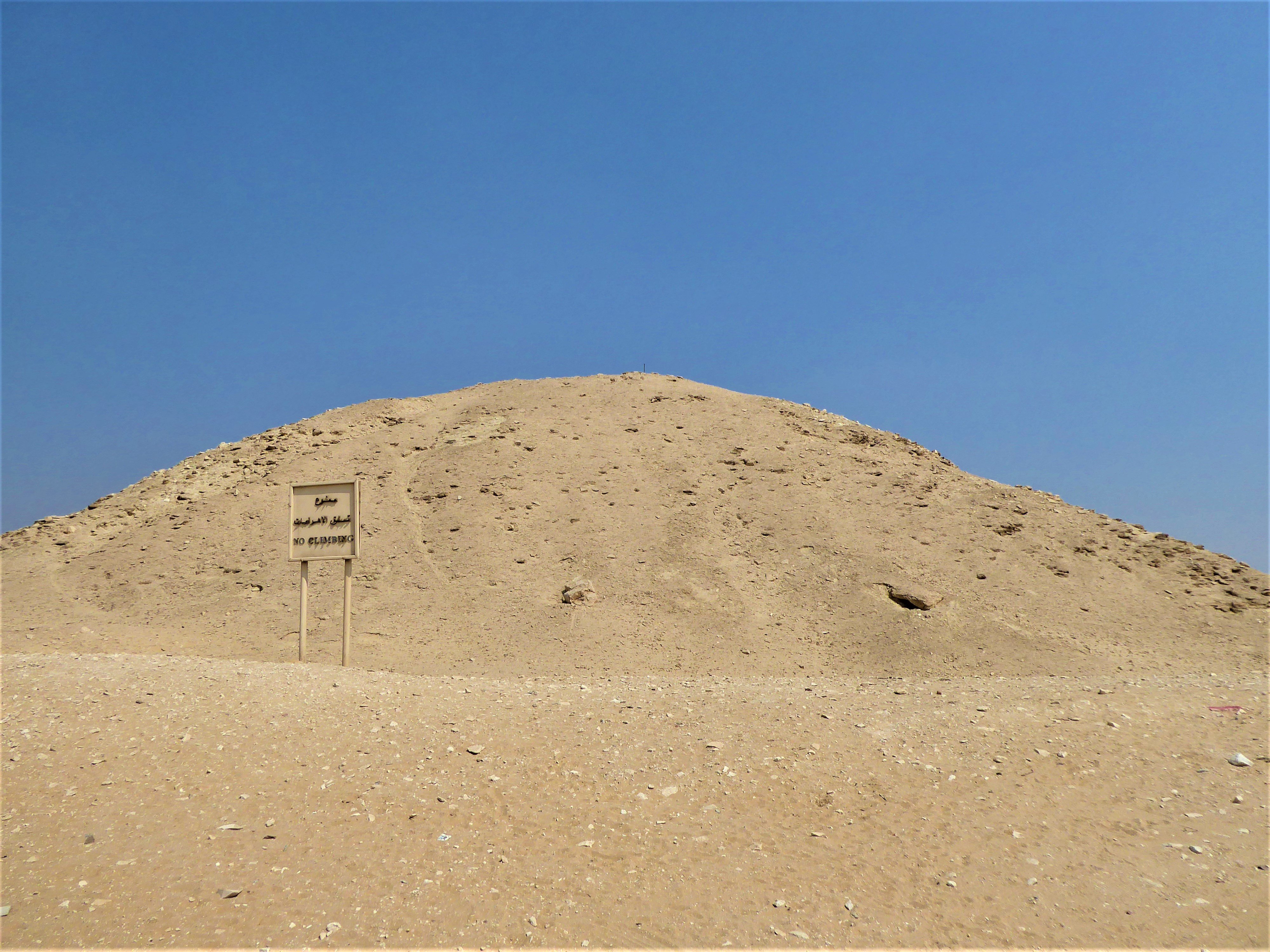
Pharaoh Teti
We parked the car in front of what looked like a pile of stone and sand, it was in fact the pyramid or Pharaoh Teti, it looked in much better condition from the entrance of the Red Pyramid, after seeing it up close my expectations were not very high…I was in for the surprise of my life!
Teti ruled in the 6th Dynasty for about 12 years and was the successor of Unas (who’s pyramid is also in Saqqara but not open to the public) and was succeeded by Userkare (who’s pyramid is also in Saqqara, you can get close to his pyramid but cannot go inside). It is believed that he was assassinated by his bodyguards or those close to Userkare who as I mentioned coincidentally succeeded him.
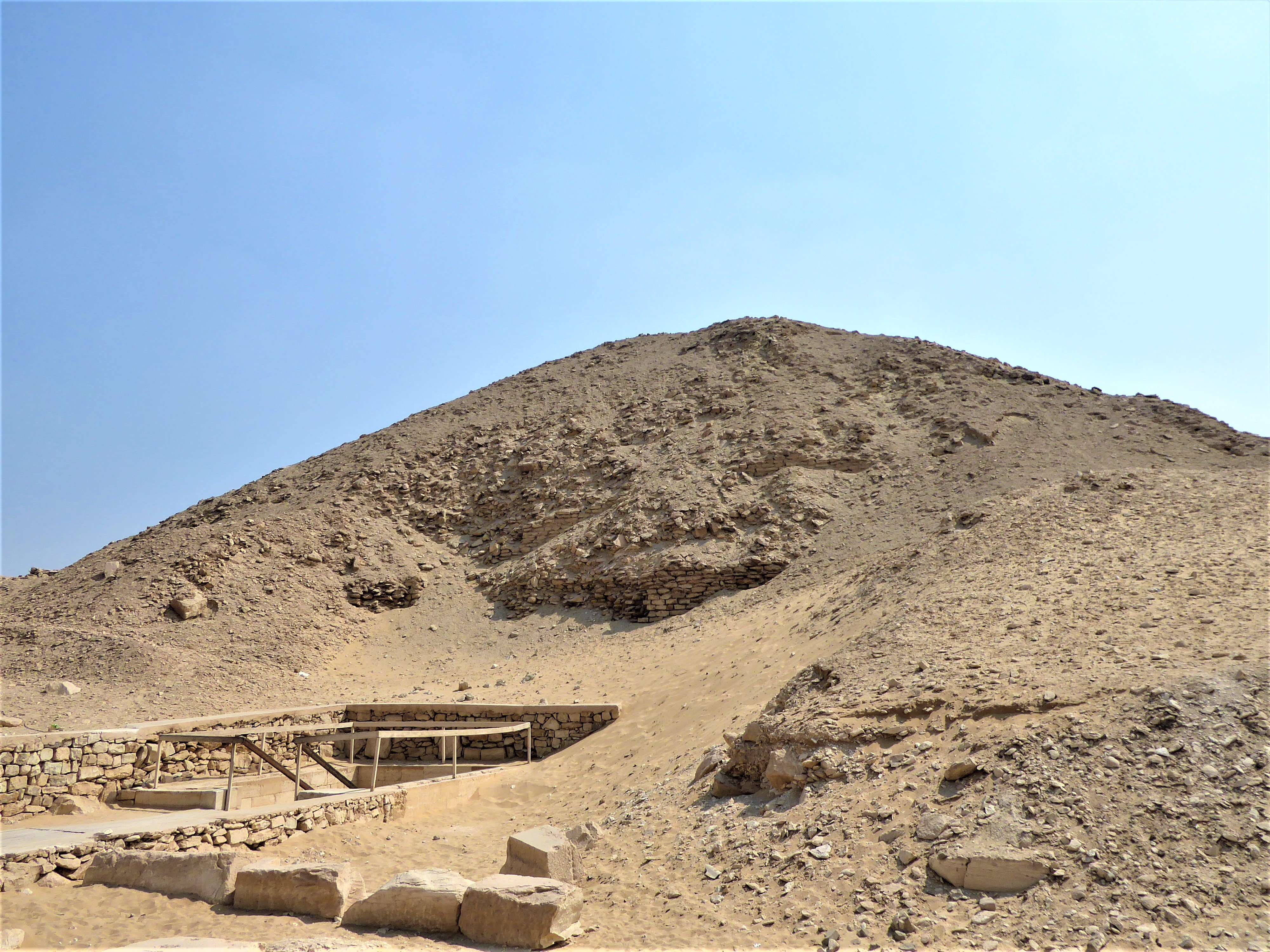
The entrance to Pharaoh Teti’s pyramid is near ground level and as with all the other passageways it is easier to walk backwards down the 23m where is ends at a small landing. The passageway is about 1m high and maybe a little narrower. The landing is only a small area and leads to a little horizontal tunnel passageway which used to be blocked by a granite block door. About halfway through the passageway tunnel there used to be another granite block door and then another at the end of the tunnel a little room only about 6 square meters at most.
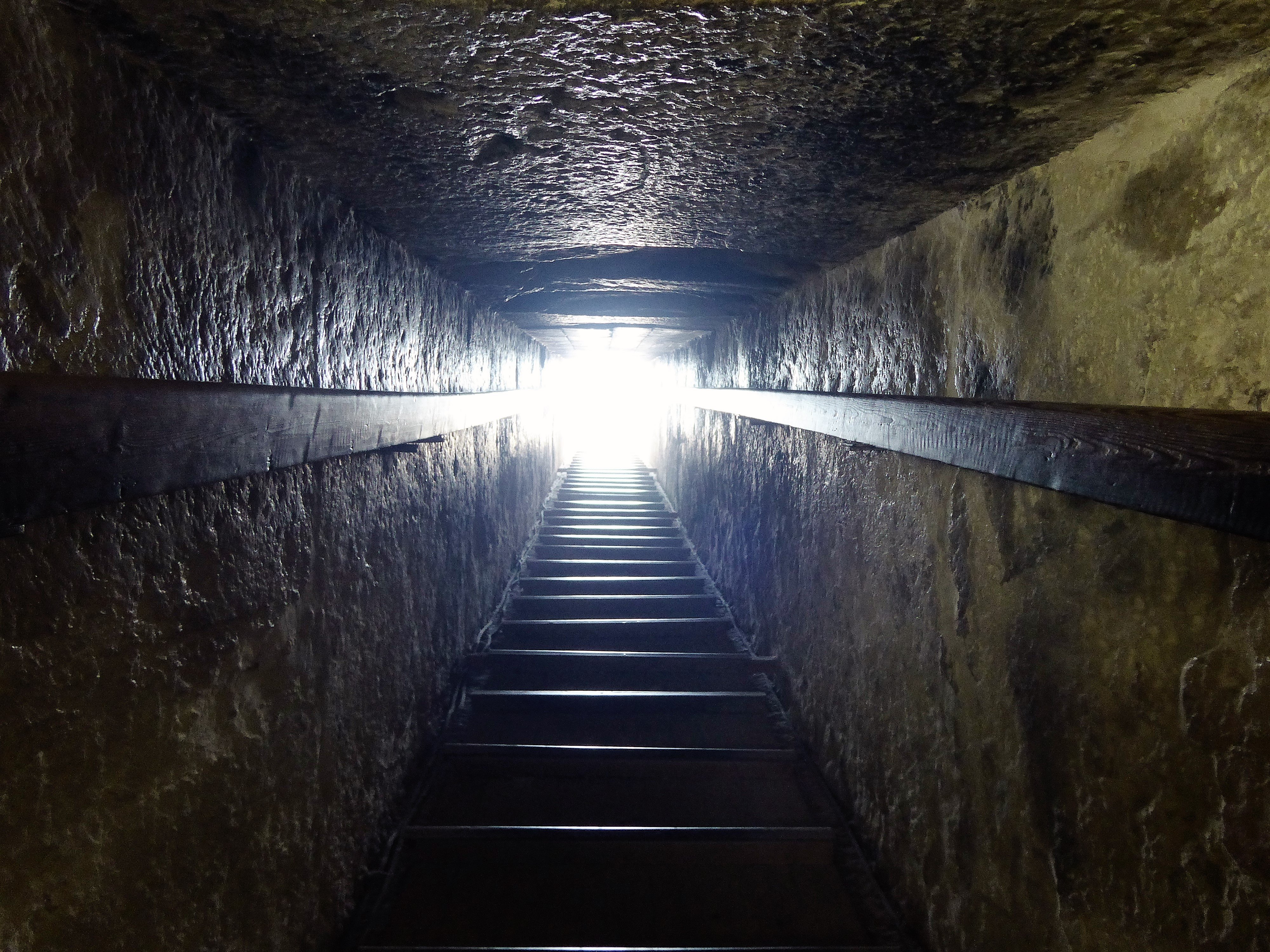
At the end of the room us another tunnel passageway that opens up into an antechamber with a vaulted stone ceiling, here I got my first glance at a pyramid filled with funerary hieroglyphics (Pyramid Text), WOW!!! This many seem insignificant but Teti’s pyramid is only the second royal monument to contain this sort of text (the other being Pharaoh Unas); a very long and complicated mystical body of text to assist the rebirth of the pharaoh. The hieroglyphics is in astonishingly perfect condition as if it were only just made. The detail and the edges of the script are crisp and look to be carved into plaster and stone. As you enter the antechamber the walls on the left and right are filled from floor to ceiling with script and it is simply breath-taking, and this was only the antechamber.
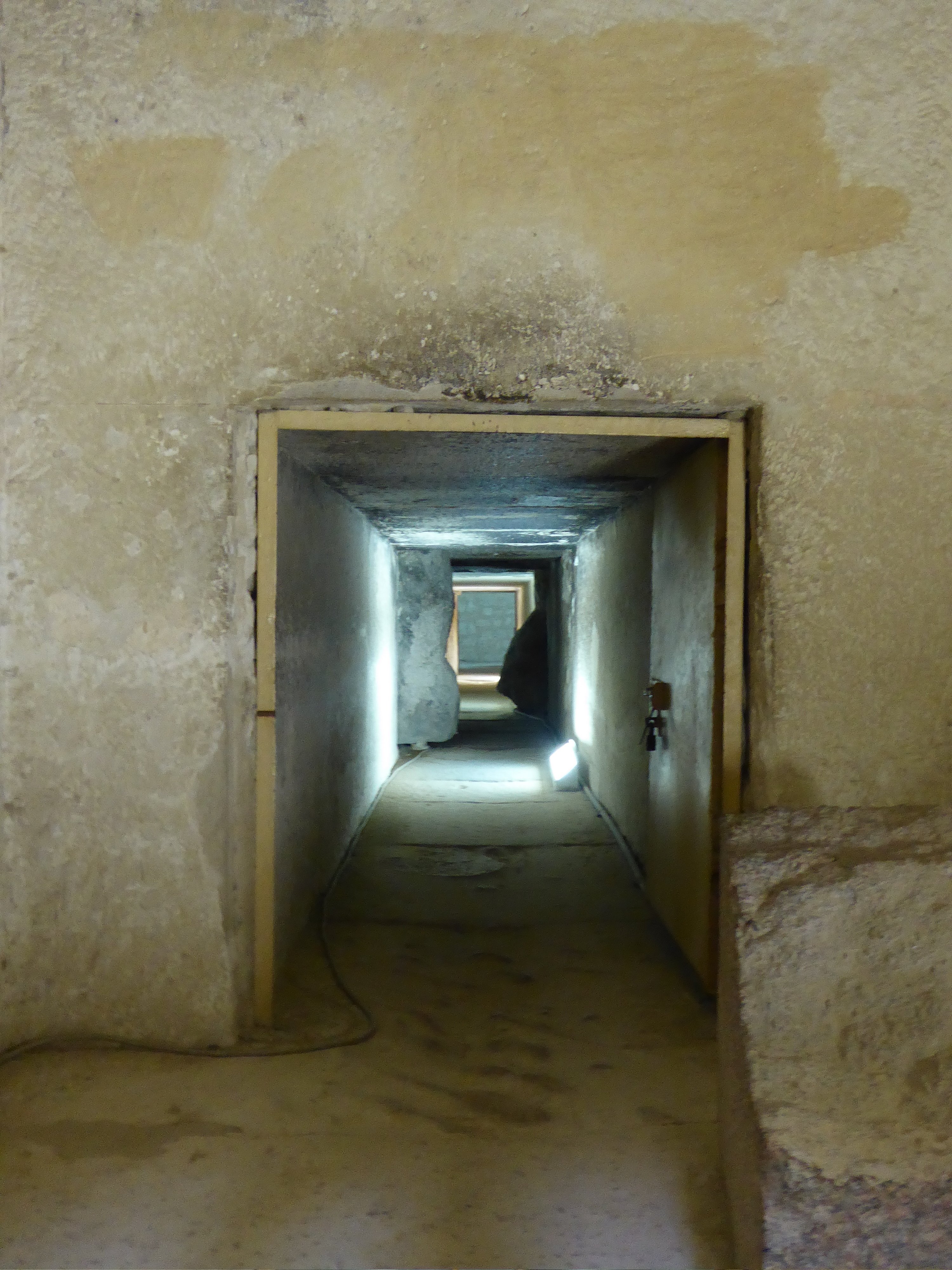

To the left of the antechamber lies another tunnel passageway that leads into the serdab which is like a prayer room. The tunnel is filled with hieroglyphics on the sides and I think the tunnel used to be blocked with a granite stone. The serdab is only about 1.5m wide and just over 6 metres long, the roof is one piece of limestone weighing 40 tons! Inside the walls are decorated and there used to be two statues of the Pharaoh which are now missing and I think they are in the Egyptian Museum in Cairo, I think I may have found them (see my blog on the museum). What is quite fascinating about the Serdab is the acoustics; the room is small but has a big echo. You can’t even whisper without it echoing, somehow the sound, shape and materials amplify the sound three or fourfold. If you whisper at one corner it is load in the other corner, but the sound stays inside the chamber and you can’t hear people speaking if you are standing in the antechamber.

Back into the antechamber and through another tunnel passageway opposite leads into the burial chamber, this used to be blocked by two granite block doors. As you duck down to go through you can see to the back of the chamber and a massive basalt sarcophagus lies at the end, what you can’t see through the tunnel is the ceiling. A vaulted ceiling is a spectacular sight covered in painted stars. It looks like the ceilings is stained back and the stars cut into the rock making them stand out white against a grey surface. Some of the ceiling slabs have slipped but that doesn’t detract from its beauty. The wall by the tunnel is also filled with pyramid text in immaculate condition. The text itself isn’t complete so I’m assuming Teti needed to be buried in a bit of a hurry, his cartouche distinctly recognised and visible as it is repeated everywhere.

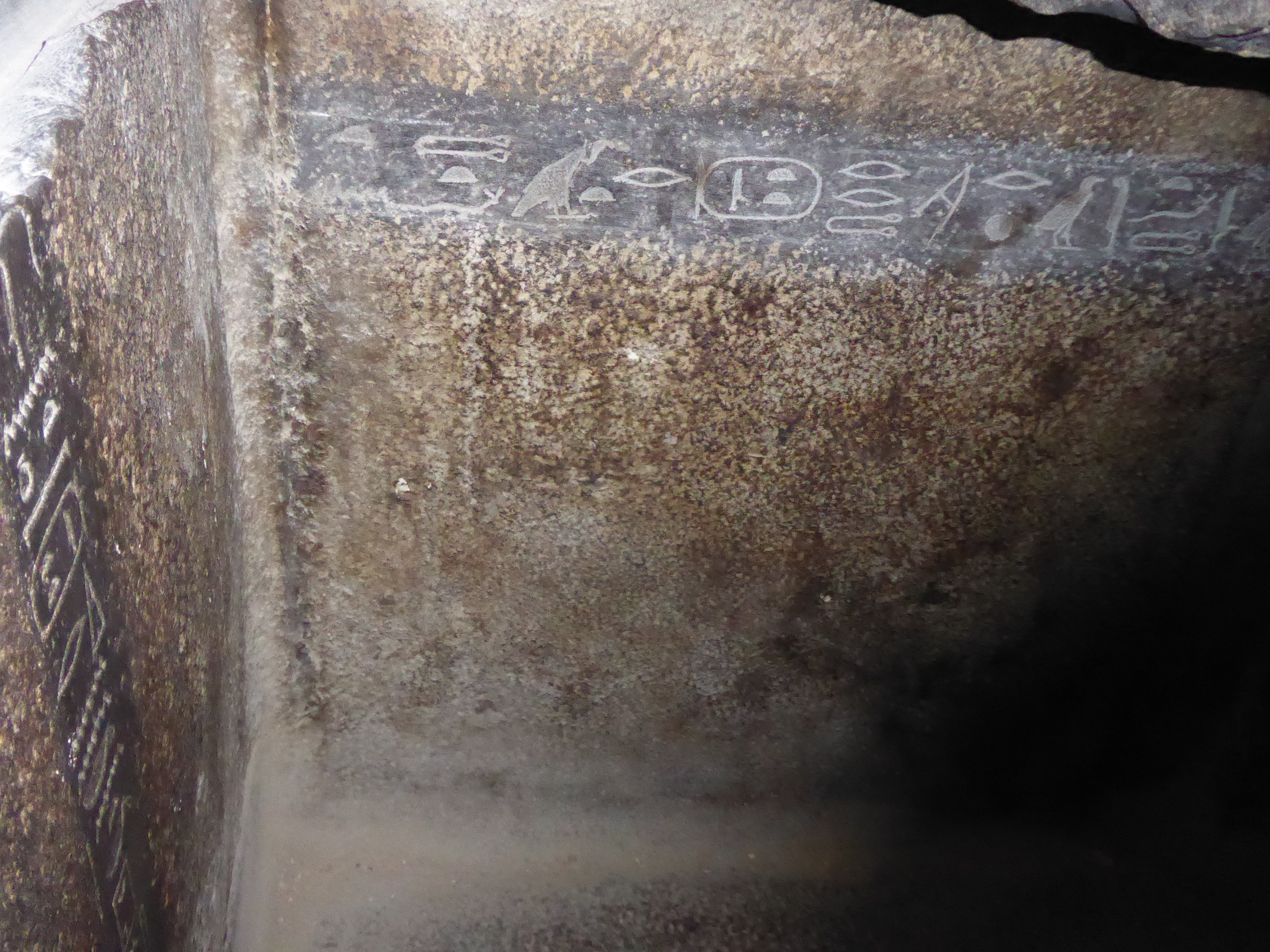
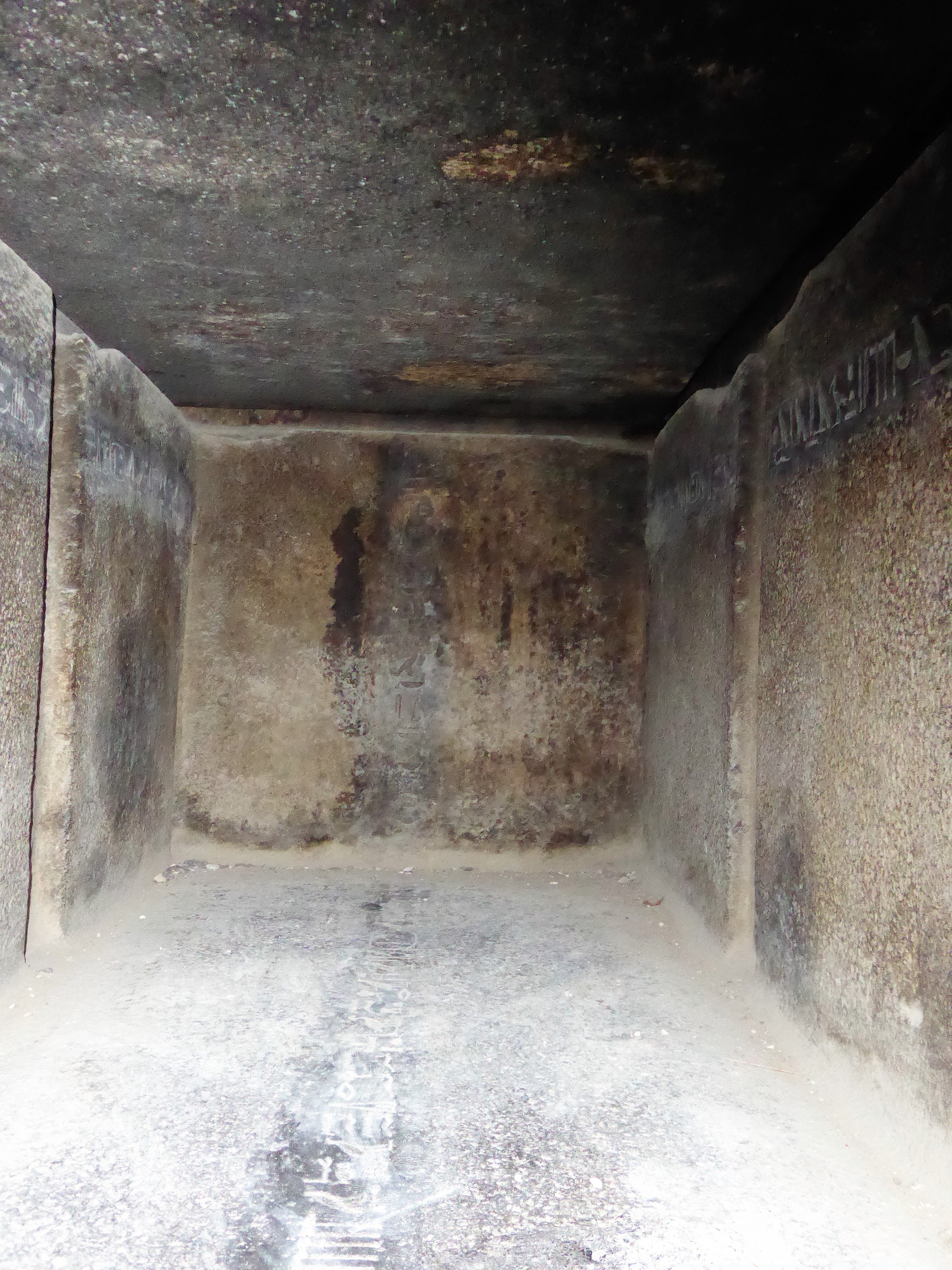

The sarcophagus is an imposing piece at the back to the chamber; dark grey and as smooth as glass, the lid fits absolutely flush and the middle is convex to fit smug on the base. Inside are inscriptions at the top, bottom (vertically) and along the sides (horizontally). What it weighs I have no idea and can’t find any research with suggestions but it must weigh a lot, the lid alone must weigh over a ton…my guess. The sarcophagus used to be gilded inscribed. What amazed me and always has is considering the tools they had moving this is impressive enough but how they cut it with such precision, size and angles is a mystery – there are many hypotheses but none have been practically proven, nevertheless it would be impressive to achieve even using tools of today.
I wish I had the words to describe how I felt visiting Teti’s tomb, pictures I had seen to many times to count throughout the years and finally got to see it with my own two eyes. It is a remarkable tomb.
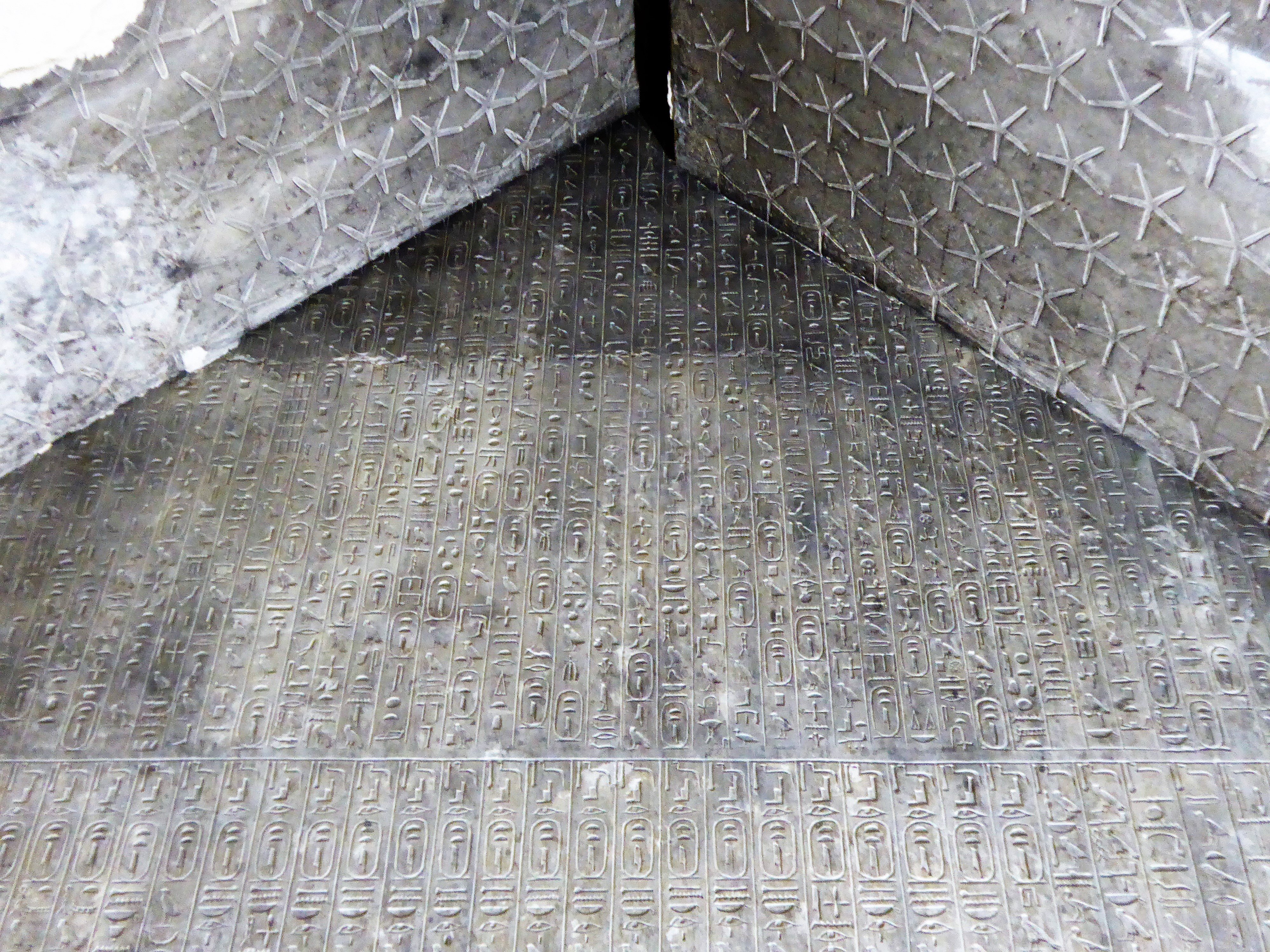
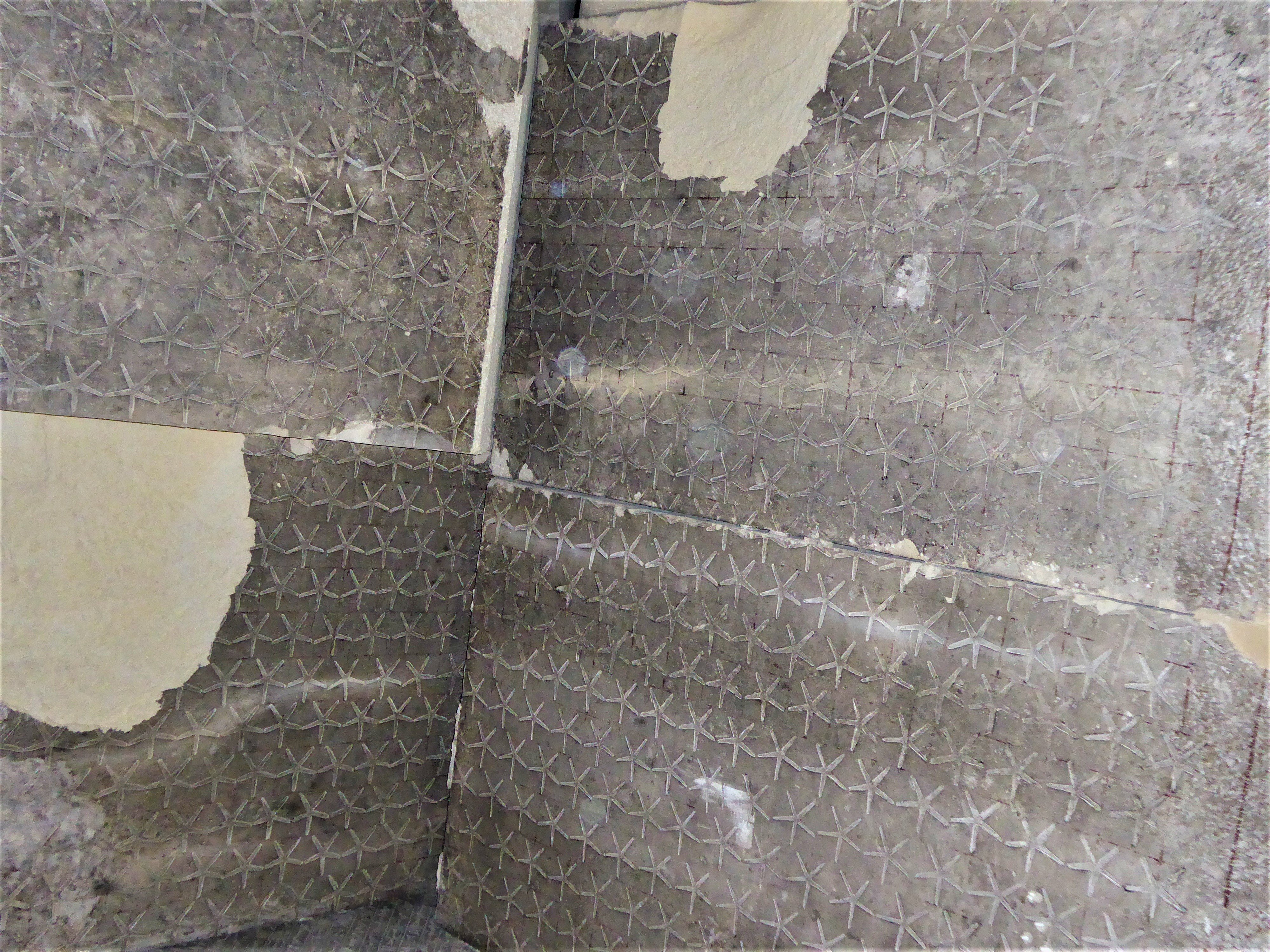
Teti’s funerary complex is big and consists of temples, tombs of high ranking officials and a three satellite pyramids where his two Queens are buried, the third recently discovered where is mother is buried – what is only display is a fraction of once what was.
Just opposite the entrance of Teti’s pyramid is a large and complex mastabas which looks like it is one building but has 33 rooms, this is the mastaba of Mereruka. A very high-ranking official who was married to Teti’s daughter. He was the highest-ranking government official with many titles Vizier, Inspector of the priests who were associated to the pyramid of Teti, Governor of the palace, Chief Lector-priest, Overseer of the royal record scribes and Director of all the works of the king – in other words he was the Kings right-hand man. Mereruka wasn’t the only person buried in this mastaba, it was built for him and his family and is the biggest and most elaborate non-royal tomb in Saqqara and oh my it is stunning!

Mastaba of Mereruka
The mastaba of Mereruka from the outside isn’t much to look at (much like a large single-story plat roof house – 23m long, 30m wide and 4.5m high), from the parking lot you walk past it to get to the entrance of Teti’s tomb. There are two doors that you pass for with carvings into the stone with pictures and hieroglyphics, I was impressed with those alone! You walk around the corner to the main door with is almost identical to the other two. The first room has large decorated pillars but your eyes are drawn to the carved reliefs and painted walls.


They are in pristine condition depicting Mereruka and his family (mostly Mereruka) hunting, fishing, killing animals to eat and in essence showing what a great man he was and his wealth. There are also everyday life scenes with him and his family with many of him and his wife Sesheshet Waatetkhethor (same first name as her mother and often just referred to as Waatetkhethor). Going further into the mastaba of Mereruka the reliefs some of which are carved and painted, others just carved and some paintings directly onto the walls but mostly the painted carvings and carvings.
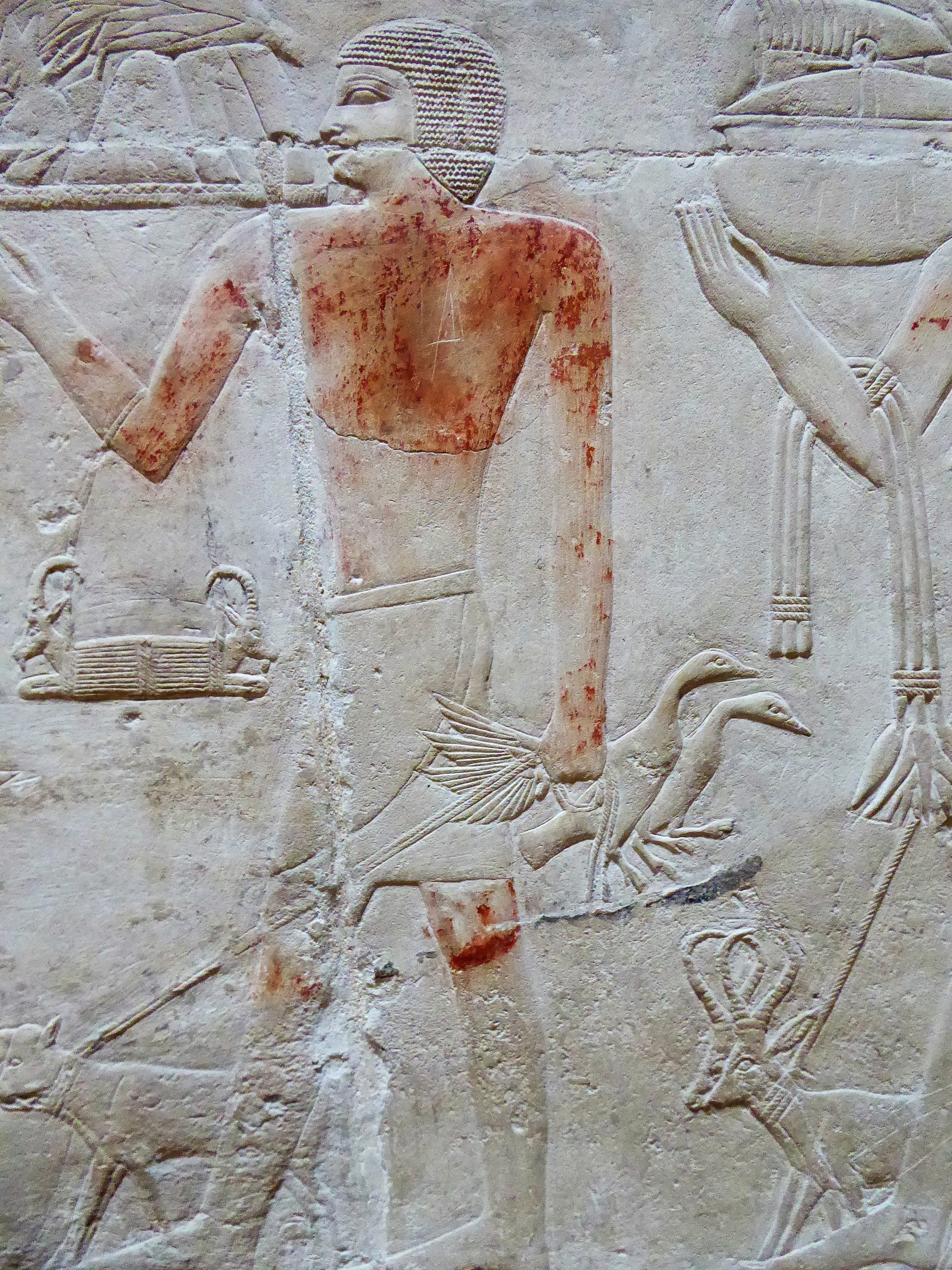
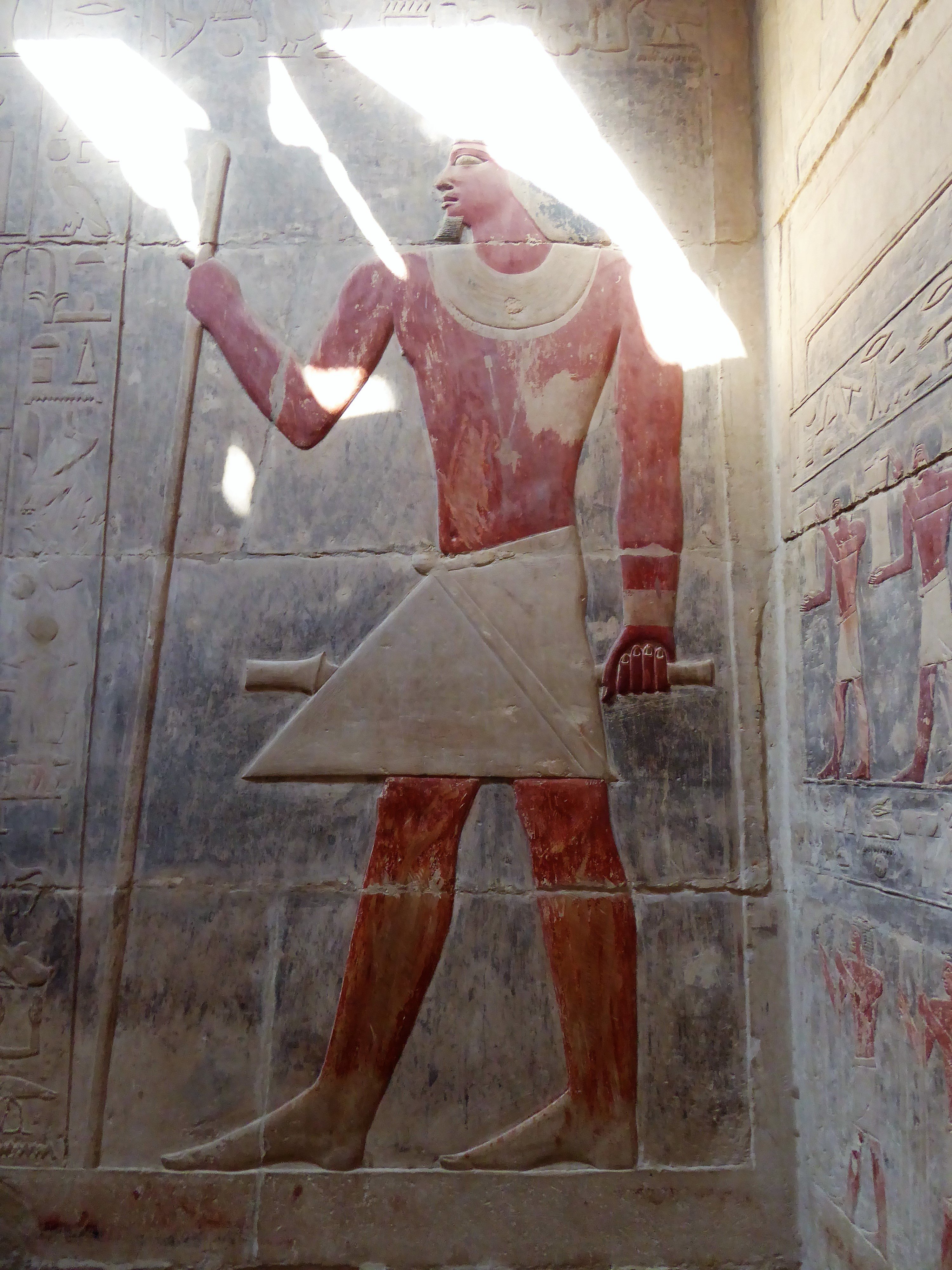
The decoration is extraordinary and gets better the deeper into the tomb you go with large carved painted depictions of Mereruka with colours bewilderingly vivid after over 4500yrs. Up close the tinniest details even the grooves depicting the curls of hair are in perfect condition the lines still as precise as the day they were made. The photos don’t do them justice…you’re not supposed to take any so I couldn’t use my flash – my bad!


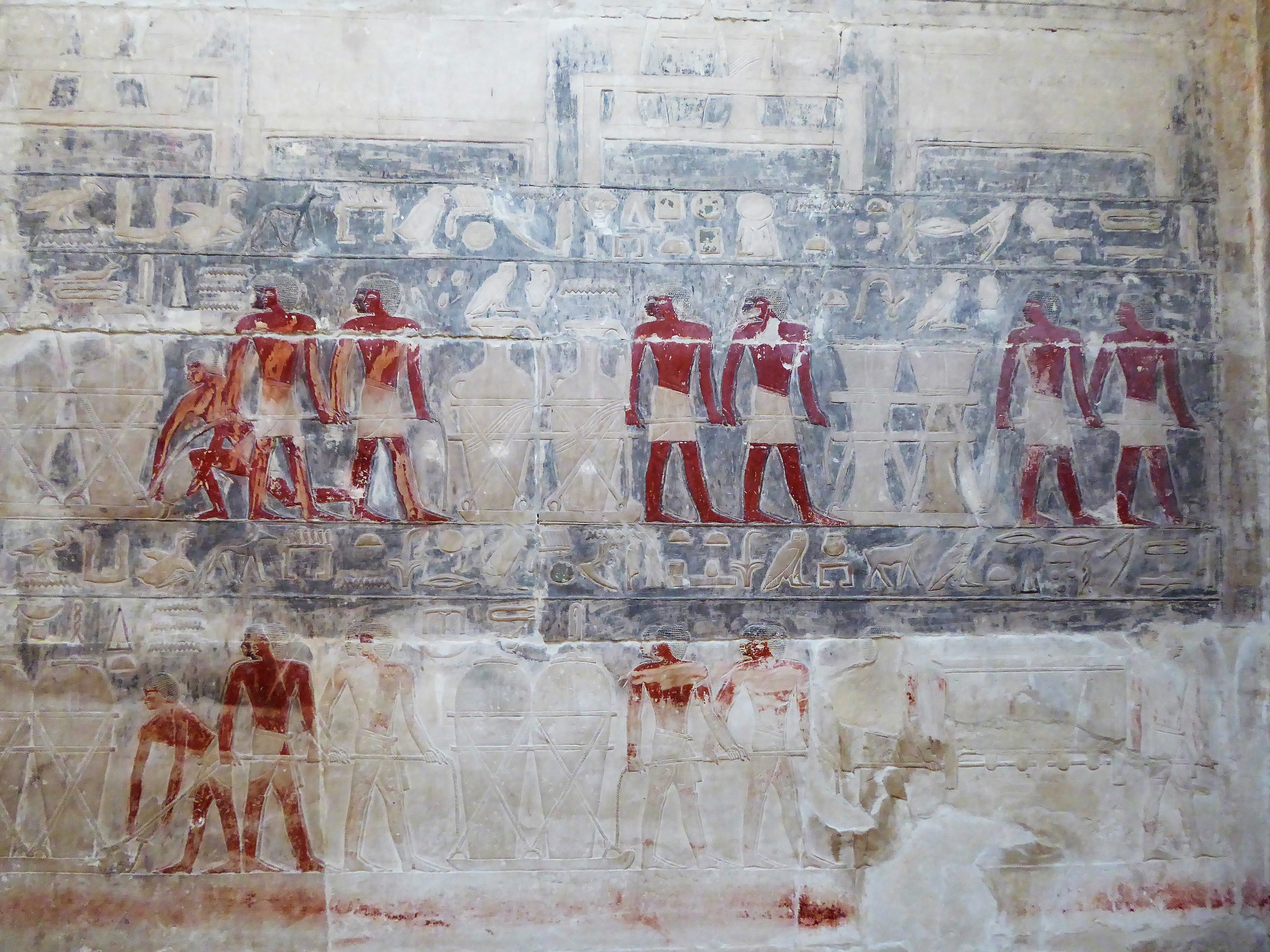
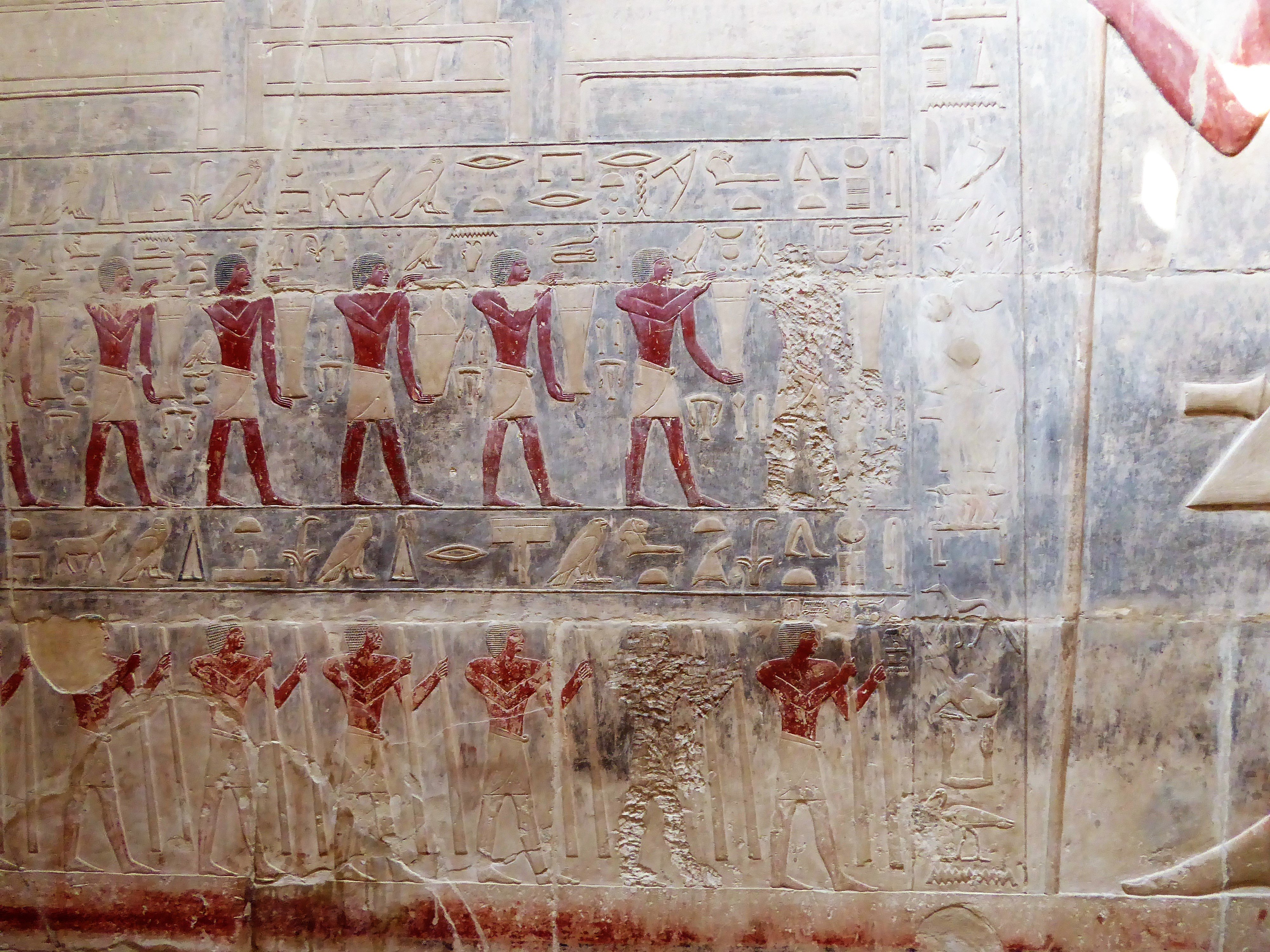
Step Pyramid / Pyramid of Djoser
Built in the 27th century BC for the pharaoh by his vizier Imhotep who himself has become very famous and revered over the thousands of years and become quite mythical – with no real historical backing. Now unlike the other places I had been to where you can figure out what is where etc. the Step Pyramid complex is big (150 000 square meters) and complicated, not everything is open to the public and there is no signage at all to it was difficult to understand what it what, coupled to this there are other tombs and Pyramids so close by that I didn’t know what belong to what…and there is so much there!
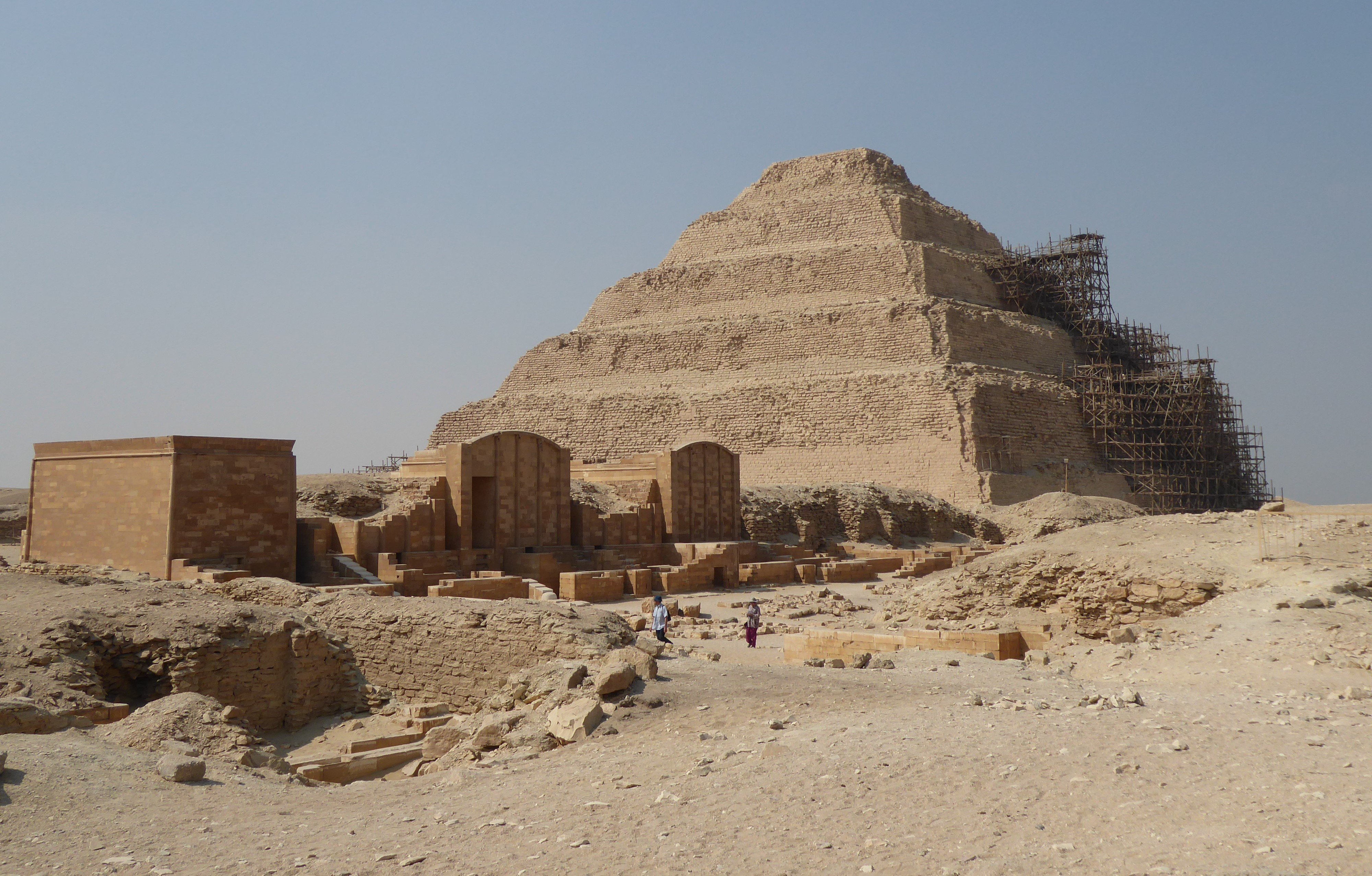
What makes the Step Pyramid important is amongst other things it was the first large-scale cut stone construction found anywhere in the world. It is also the best example of a step pyramid before they evolved into true pyramids.

The pyramid is rectangular 125m by 109m and 62m high, not open to the public and they were busy with restoration work so you couldn’t even get close to it. I would have loved to go inside, the pyramid and complex combined has a labyrinth of close to 6km of tunnel! Open to the public is the courtyard and hypostyle hall or roofed colonnade on the South corner of the courtyard.
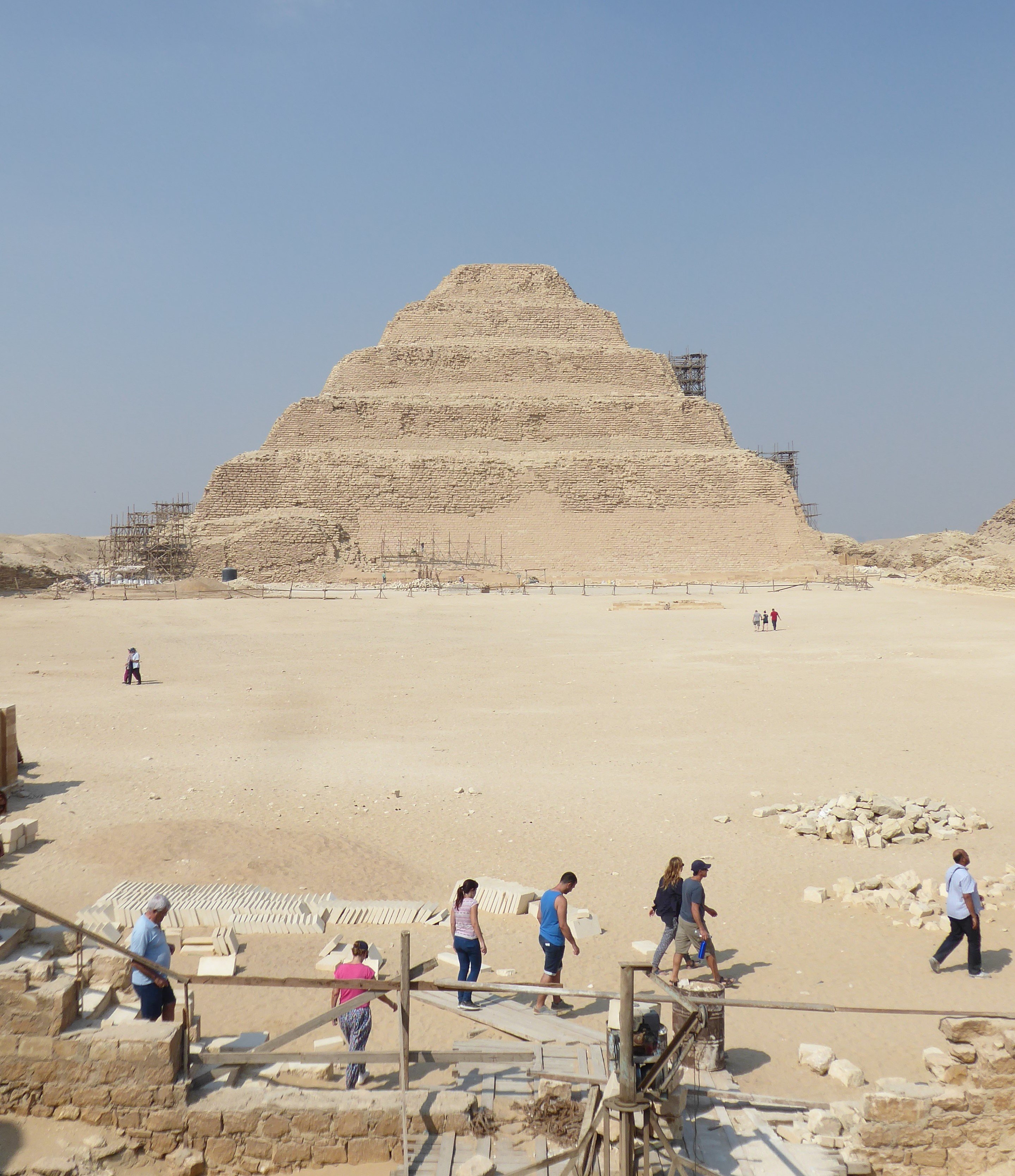
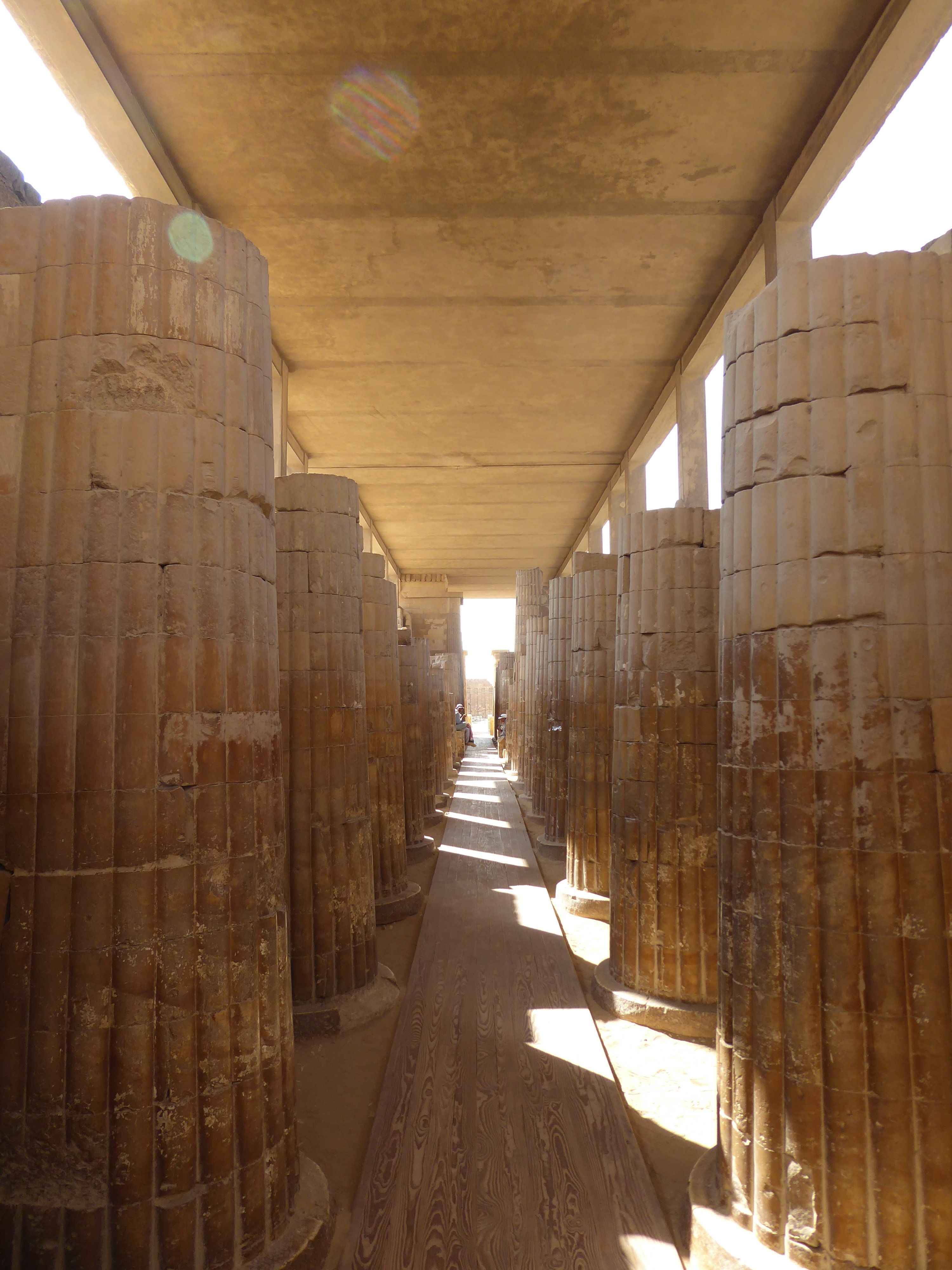
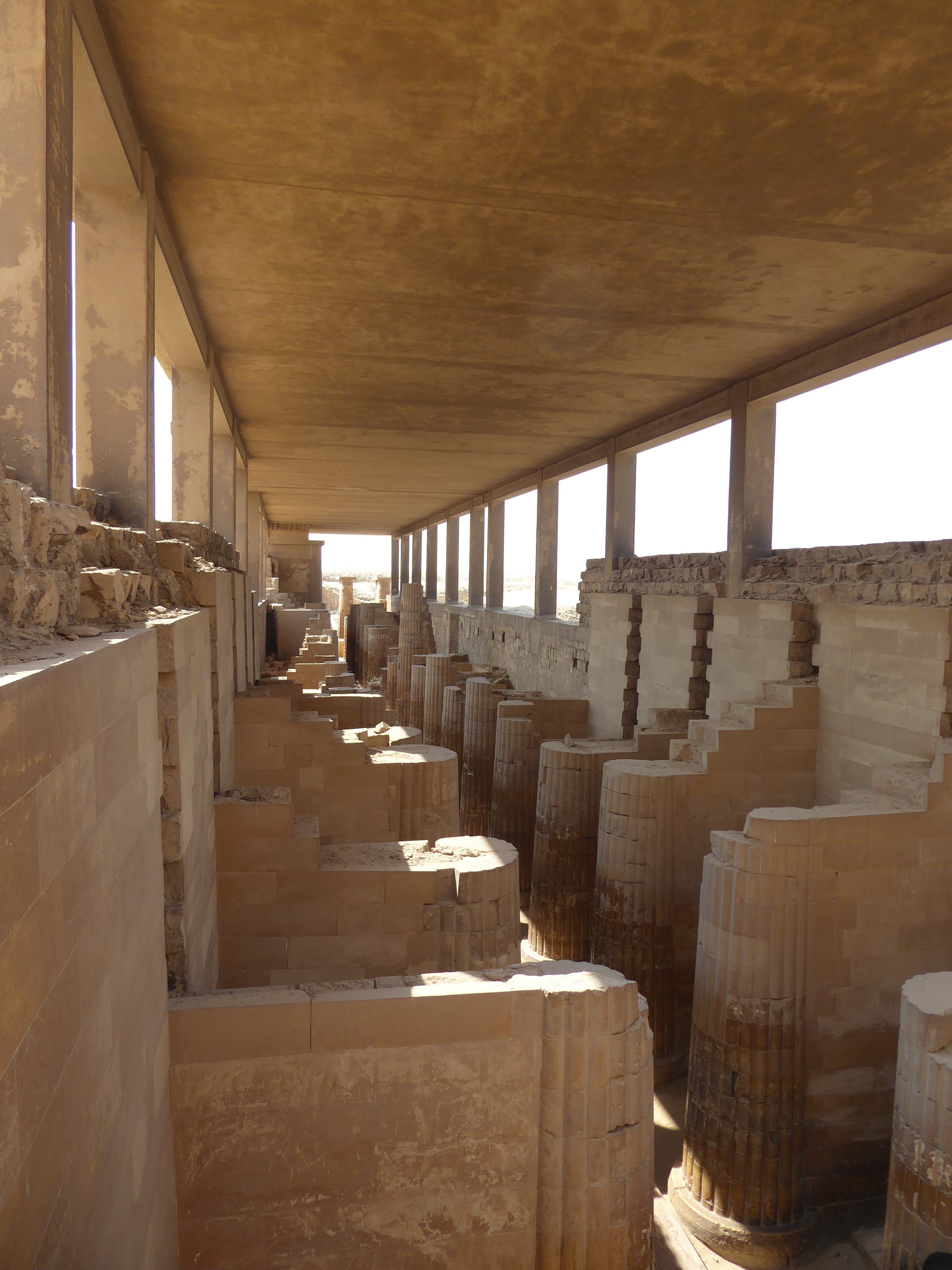

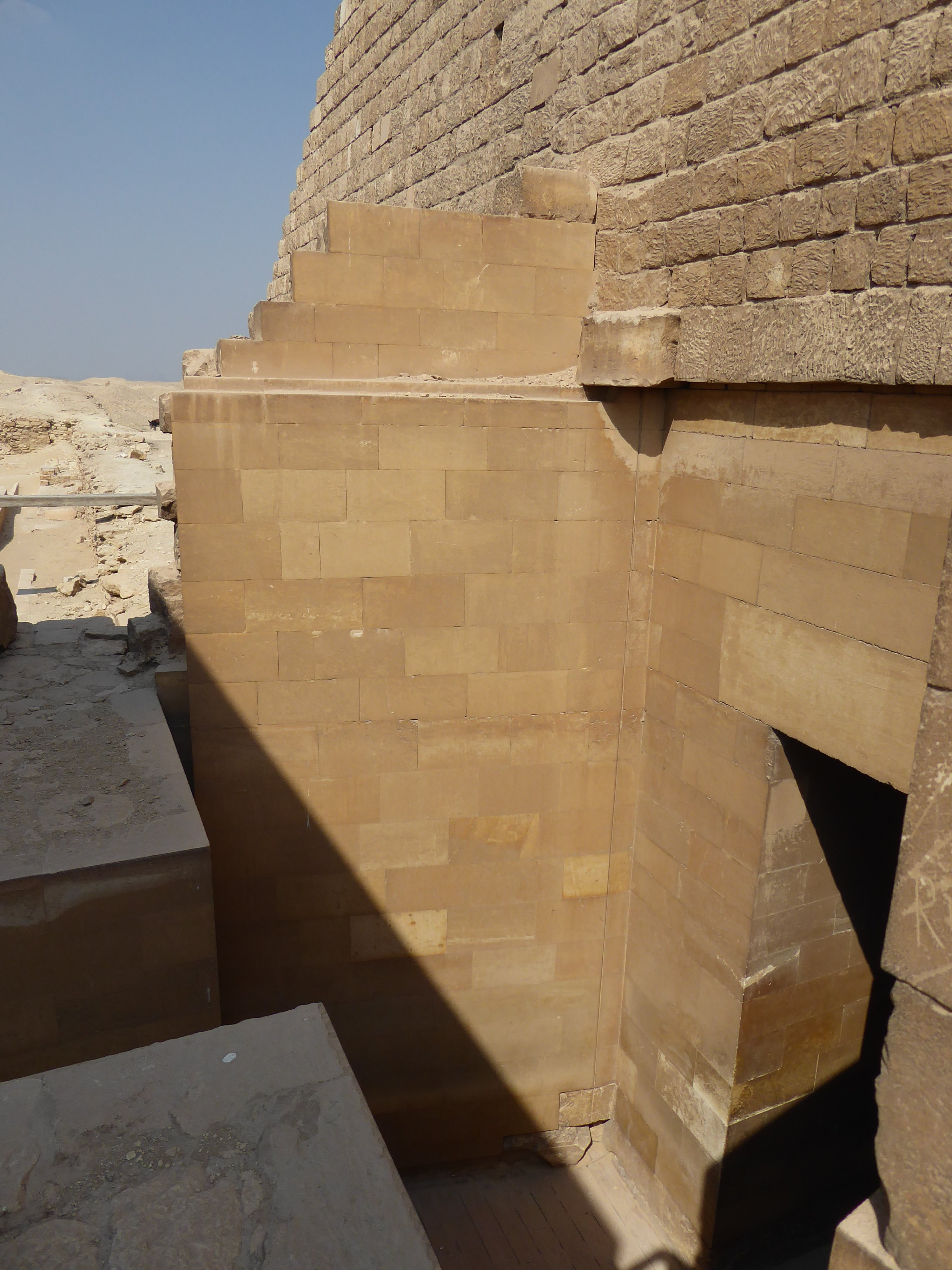
The whole complex used to be walled creating a funerary/tomb compound. The colonnaded hall was the main entrance into the compound, the entrance used to have doors but it also has massive open imitation stone doors of polished smooth limestone. They are very impressive and to think they are for ecstatic purposes that’s a hell of a lot to effort to make. I have been told that they also have a symbolic reason of them being used by the Pharaoh to come and go from the compound in the afterlife.
This is where things get a little sketchy, if you carry on through the colonnaded hall you enter the large South courtyard but a little further on you on the left side is the Southern Tomb…about 30m down. Closed to the public it has a staircase doing down and the exact purpose for this tomb isn’t know, some people say it is for the Pharaohs’ Ka or canopic jars but this doesn’t fit with any prior or post funerary customs. It must have be an integral part of the compound to create a tomb 30m down with tunnels and chambers….hmmmm.

Pyramid of Unas
Not open to the public and in a rather sorry state. 43m high with a base of 57m it is still a large structure. Would like to say more but there isn’t much else I can given the lack of access, another reason to return. The whole area at Saqqara is littered with sites; buildings above and underground tombs, temples, wells, monuments etc. the history of this area is immense. My frustration is the lack of signage or qualified tour guides. There are guides and I’m sure you could hire a qualified person but not at the site, those that are based there that do give tours don’t know their stuff, I know more than them and I don’t know that much! As with many 3rd world countries they seem to lack to foresight and planning to maximise the tourist experience e.g. to fully tour Saqqara you would need a few days, most tourist don’t have a few days but instead they amble around for an hour or two at most because you just walk past things that you have no clue what they are and in what context they fit into the area. I’m certainly not advocating big flashing light and modern advertising billboards but an area with so much on offer and to tell it could certainly boost their coffers and in turn increase tourist numbers therefore create more jobs and invest in the area. There is so much that the desert has already started to reclaim that if left for long only sand will remain. For such an acclaimed World Heritage site if they cannot put a proper strategy to enhance the area and that of those who live and work there then these monuments of the ancient past will not be around for very much longer.
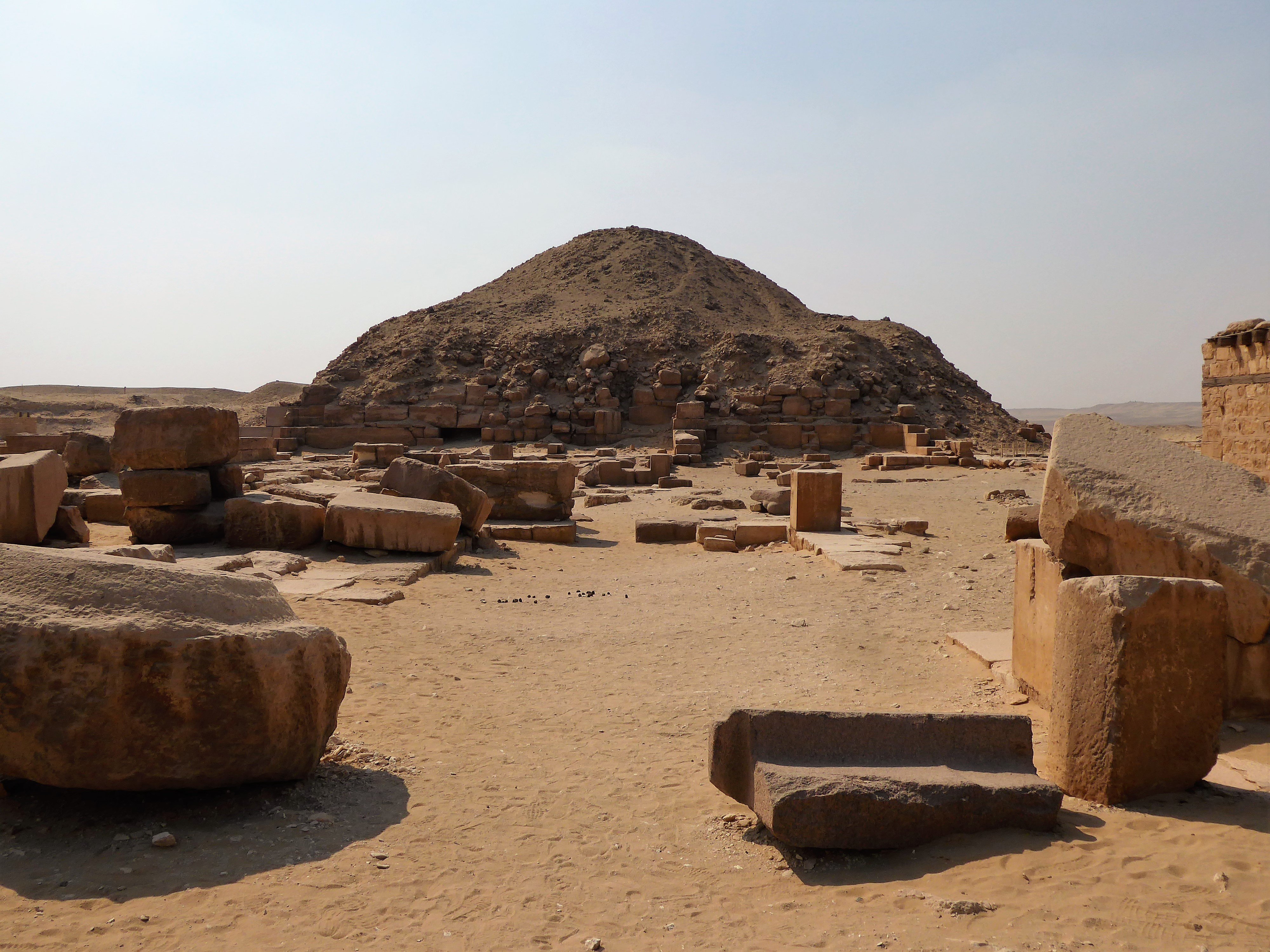
Princess Idut / Sesheshet Idut
It is thought that Princess Idut / Sheshet Idut is the daughter of Pharaoh Unas and isn’t always open to the public, the door was open when I got there and no one was there so I went in. I didn’t know whom the tomb belonged to, even standing just outside the entrance you can’t see inside because the sun was scorching and reflecting off the sand and stone. It was a fantastic surprise when I entered! I was excited as soon as I entered but my expectation wasn’t high considering the state of everything around, there wasn’t anyone at the entrance either so I thought I would see a plane mastaba or even just an ancient building of some sorts – obviously it had to have some importance because of its location.


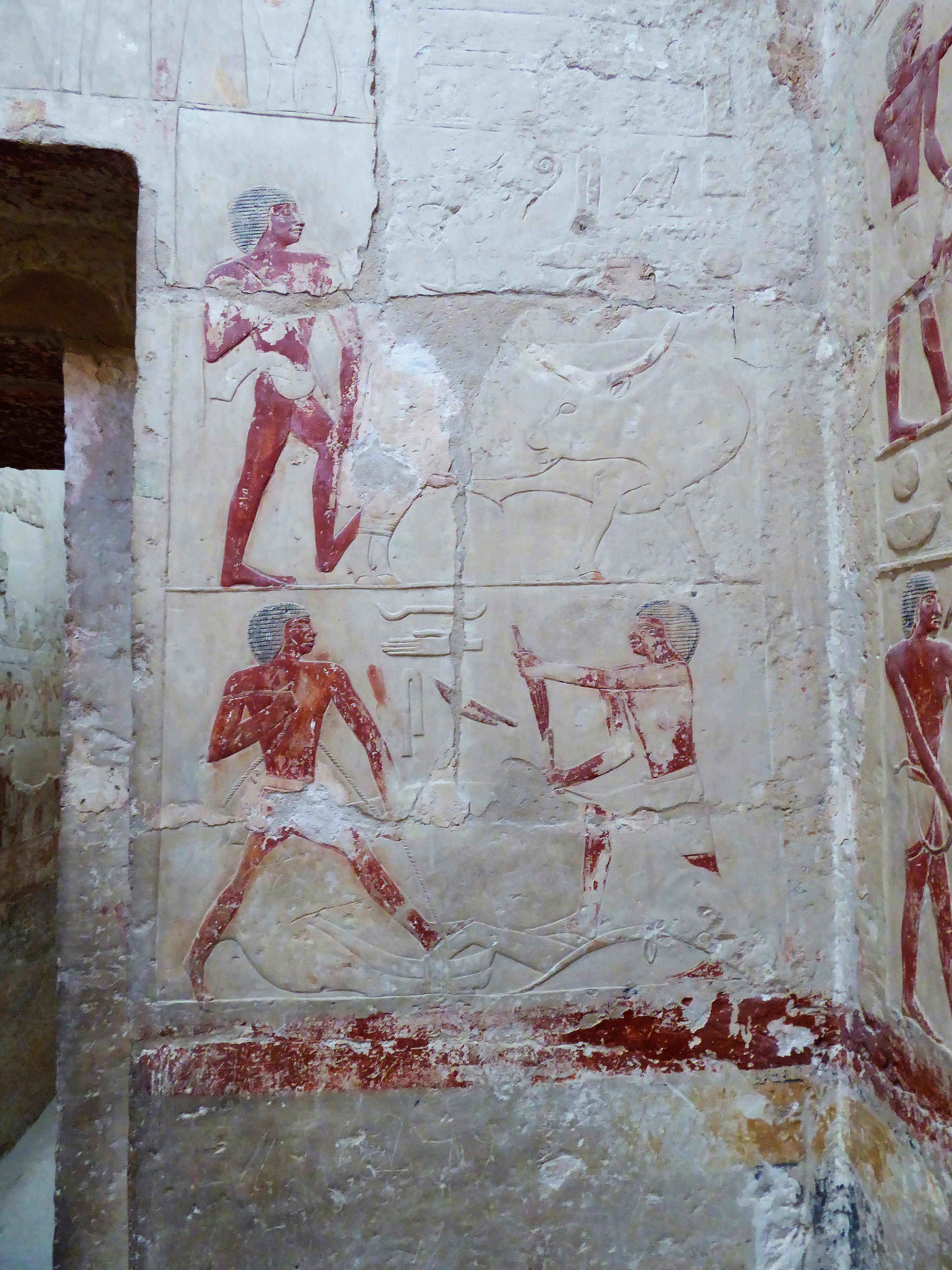
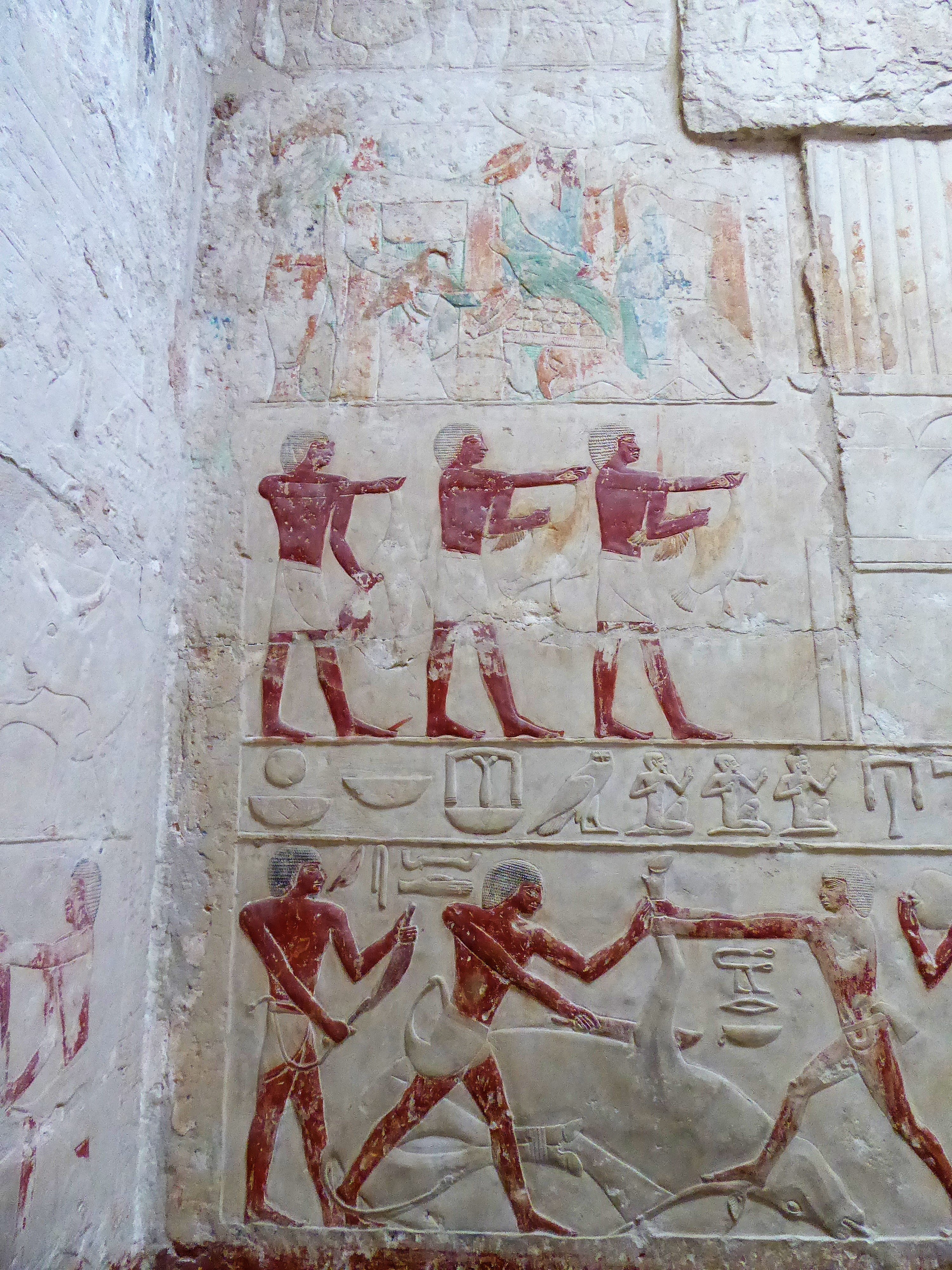
As you enter ancient reliefs are still visible but not in the best of condition, reliefs surprisingly are not common so even to get a glimpse of a faded painted one is quite special. Even though faded the pictures are still clear and the distinctive red/terracotta paint still has its warmth of colour. As you continue further in the pictures become better and better with additions of blue, yellow, orange and green. The reliefs and carvings descript in their story telling of hunting, fishing, every day life and men coming to visit the princess who is thought to have died at a young age. There are false doors and quite a few rooms, I wish I had stayed inside for longer but I was feeling quite nervous as I didn’t know if I was supposed or allowed to be inside. Really wish I could/should have given Princess Idut’s tomb the time it justly deserves. Whilst inside I heard someone at the entrance so quickly took a few pics and walked briskly out where a many was sitting outside and asked/said something to me by I just kept walking!
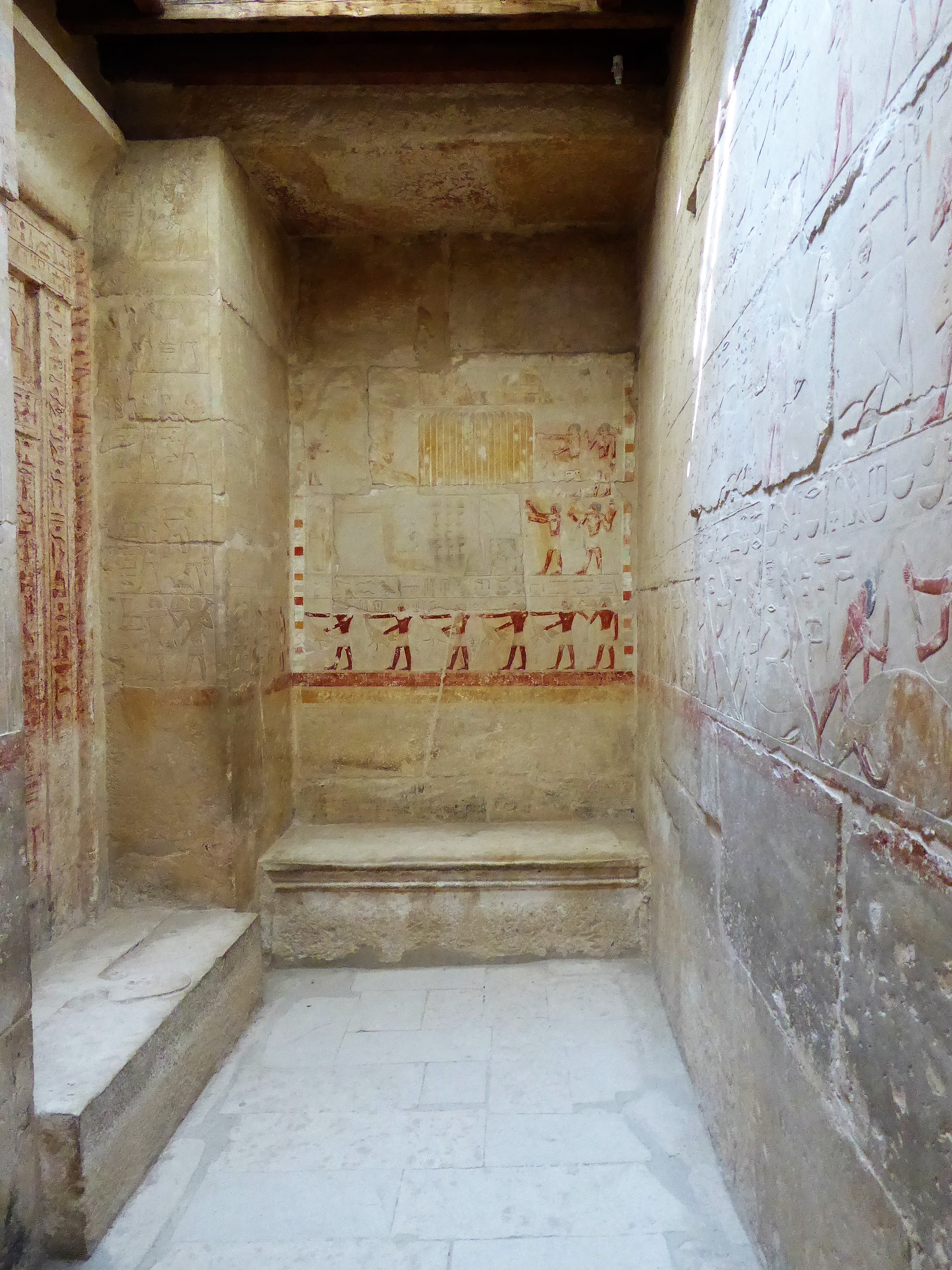
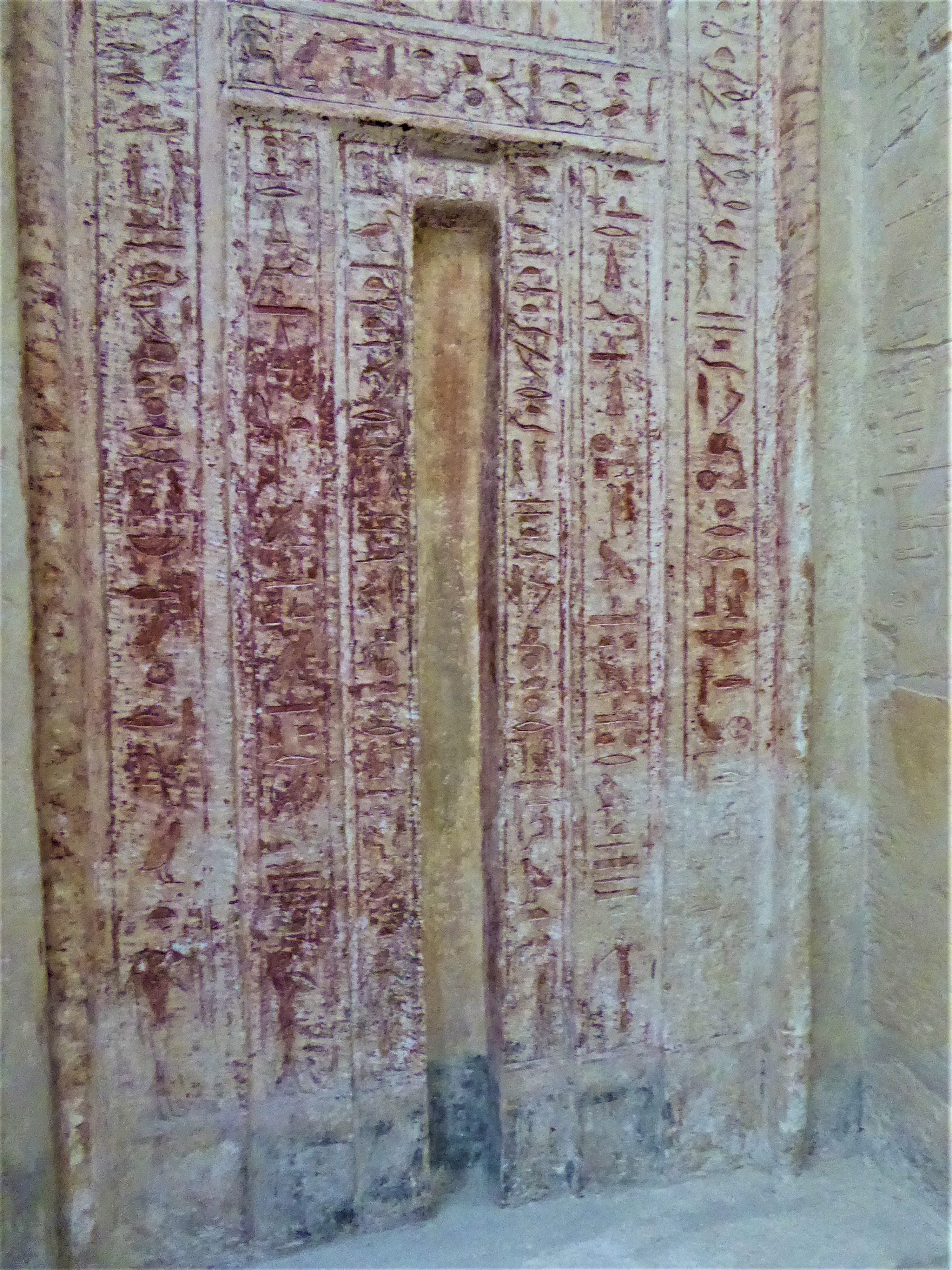
The Serapeum where the massive sarcophagi for the Opis Bulls was closed, that was a massive pity! Next visit! My time in Saqqara was very sadly at an end and I only saw the tip of the iceberg! This would be top of my list if/when I next come to to Egypt.
I’ve included a few additional pics.


Next stop was Aswan but you’ll have to wait for that post. If you missed my Dahshur visit here it is:

These photos are quite spectacular. And the story you tell is so real